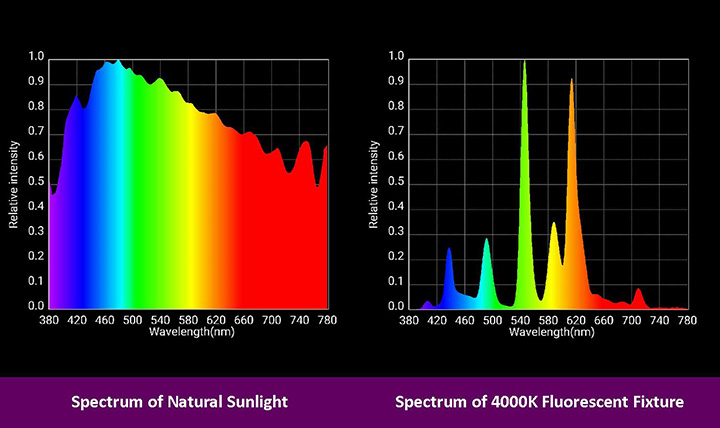
Lighting is changing very quickly. Not only the technology of lighting but more importantly our understanding of how light affects human physiology. Advancements in the technology of how we produce light have enabled us to separate light spectrum down to the nanometer and study how this light not only affects human physiology but all living organisms.
Step back and think about evolution, all life began with light. Different life forms evolved and thrived based on specific spectrums of light. Humans, plants, bacteria, etc all thrive or die based on the spectrum of light it is exposed to. You can obviously see the difference between the spectrum of natural sunlight and the spectrum of a fluorescent lamp.
For us it all began with the discovery of the intrinsically photosensitive Retinal Ganglion Cells (ipRGC) found in the retina of eyes in 2002 by Samer Hattar, David Berson et al. Rods and cones are the visual photo receptors in our eyes helping us see black, white, and color; the ipRGC is a nonvisual photoreceptor. The ipRGC responds to specific spectrums of light and turns things on and off in our bodies. Much of the spectrum that drives human physiological response is missing from our everyday lighting. We are just beginning to understand how this affects us in our daily life.
We apply the latest research and lighting technology to our lighting designs. We understand there is so much more to light than just seeing. Yes, you have to have the illuminance right to comfortably perform specific tasks, but just as importantly, we need the light spectrum correct in our indoor environments to improve human health, productivity, and safety. We know how to apply this research for your specific environment.
If you get lighting right for human physiological response, a side benefit is 50-80% energy savings.



